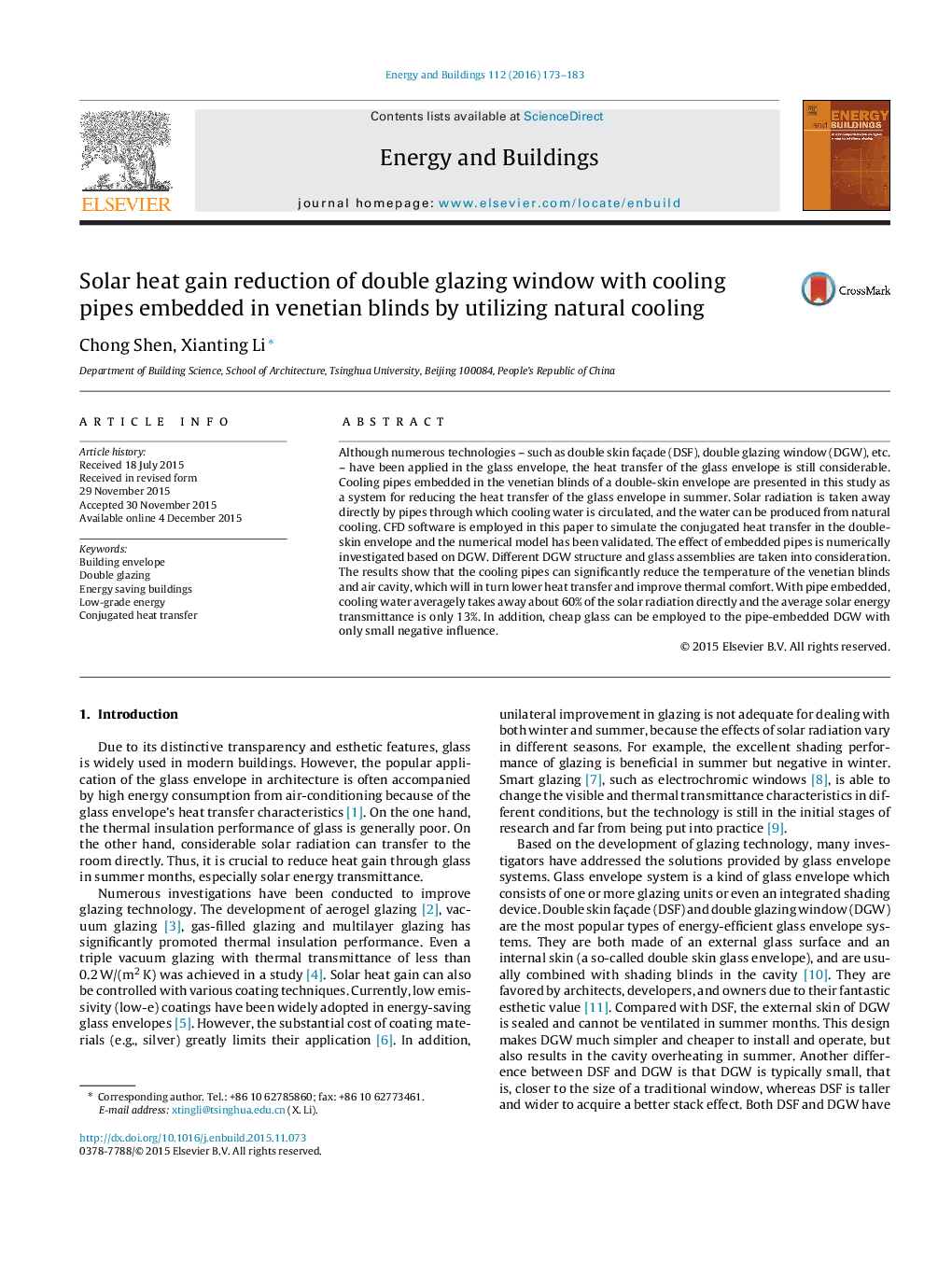| Article ID | Journal | Published Year | Pages | File Type |
|---|---|---|---|---|
| 6730710 | Energy and Buildings | 2016 | 11 Pages |
Abstract
Although numerous technologies - such as double skin façade (DSF), double glazing window (DGW), etc. - have been applied in the glass envelope, the heat transfer of the glass envelope is still considerable. Cooling pipes embedded in the venetian blinds of a double-skin envelope are presented in this study as a system for reducing the heat transfer of the glass envelope in summer. Solar radiation is taken away directly by pipes through which cooling water is circulated, and the water can be produced from natural cooling. CFD software is employed in this paper to simulate the conjugated heat transfer in the double-skin envelope and the numerical model has been validated. The effect of embedded pipes is numerically investigated based on DGW. Different DGW structure and glass assemblies are taken into consideration. The results show that the cooling pipes can significantly reduce the temperature of the venetian blinds and air cavity, which will in turn lower heat transfer and improve thermal comfort. With pipe embedded, cooling water averagely takes away about 60% of the solar radiation directly and the average solar energy transmittance is only 13%. In addition, cheap glass can be employed to the pipe-embedded DGW with only small negative influence.
Related Topics
Physical Sciences and Engineering
Energy
Renewable Energy, Sustainability and the Environment
Authors
Chong Shen, Xianting Li,
